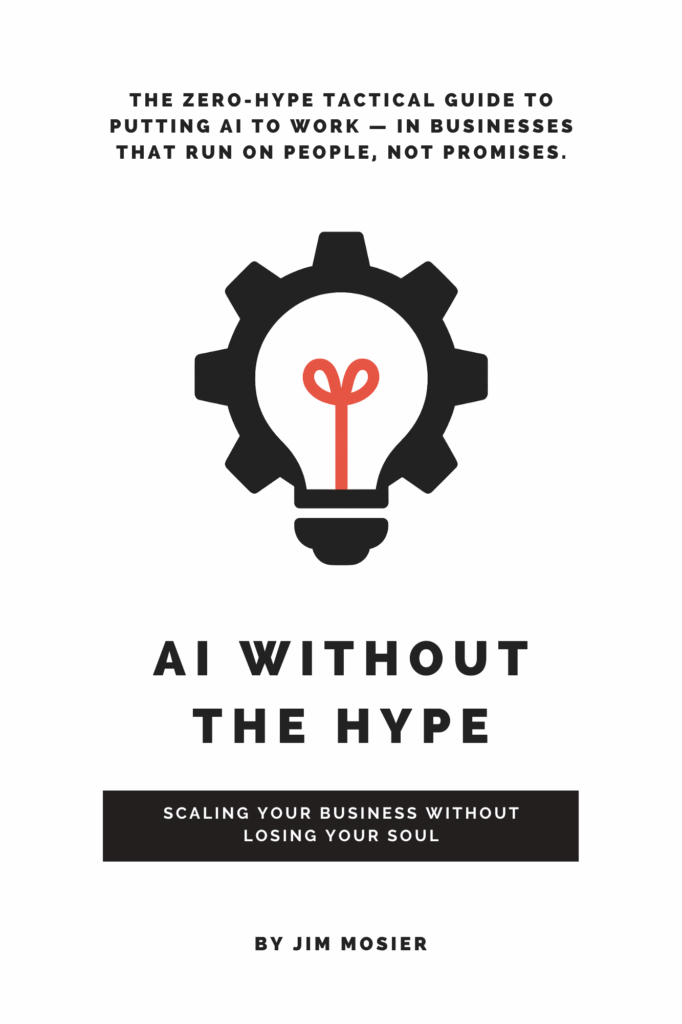Or: How I’ve Been Watching Smart Marketing Get Rebranded for 20+ Years
There’s something both amusing and encouraging about watching the marketing world “discover” persona-based marketing. Every few years, it gets a shiny new name: Customer Avatars, Buyer Personas, Ideal Customer Profiles (ICPs), and gets presented as revolutionary thinking.
The truth? Smart marketers have been doing this since before most of today’s “growth hackers” could spell “conversion rate.”
My Accidental Education in Target Marketing
Back in 2001, I was teaching myself to flip houses and drowning in real estate education. Somewhere between “Rich Dad, Poor Dad” and figuring out how to find motivated sellers, I stumbled across Dan Kennedy‘s “No-BS” series. The title alone grabbed me. I needed houses to buy, not marketing theory to study.
But here’s the thing about being in the trenches: when your mortgage depends on execution, you pay attention differently. Those direct response principles weren’t academic exercises. They were tools I had to master to eat.
I bought and sold 21 houses in 6 years using those principles. The power wasn’t in the fancy terminology, it was in the execution.
Before They Were “Buyer Personas,” They Were Just Smart Marketing
In those early days, we didn’t call them “buyer personas” or “customer avatars.” We called them “target market,” “target audience,” “whale,” or sometimes just “avatar.” Nothing fancy. No 47-slide presentations or persona-building workshops.
We just knew that talking to everyone meant talking to no one.
Jay Abraham taught us about customer lifetime value and the different types of buyers. Dan Kennedy showed us how to speak directly to our market’s deepest frustrations and desires. The legends of direct response, people like Gary Halbert, Eugene Schwartz, and John Caples, had been proving the power of targeted messaging for decades, even if buyer personas weren’t the exact term used.
They understood the fundamental truth behind what today’s marketers think is some newly discovered kind of Jedi mind trick: People buy from businesses they believe understand them.
Meet the Cast: From Don to Terry
Over the years, our business has evolved, and so have our personas. Each one taught us something about both our market and ourselves.
Dealership Don was our first major buyer persona at DealerClips. Going back to around 2009 or 2010, my buddy Mike and I were talking about getting together on a business. I was doing business with car dealers and we had an idea, but we needed to sell it. At the time, I was learning about inbound marketing and was even pursuing the path of being certified, which I eventually was.
Mike and I dreamed up the idea behind both DealerClips and Dealership Don over many late nights and questionable shenanigans at an Applebee’s of all places. It was actually Mike that had the ties to the car industry. Mike was very much a part of DealerClips and his other business, Showroom Logic, ended up getting purchased by PureCars in 2017. The idea was simple: we sent the paid ads clients to Showroom Logic, and the organic stuff (especially YouTube videos) were handled by us at DealerClips.
Don ran a car dealership, had an ego that needed constant stroking, and liked being taken to expensive places (often strip clubs). Don also owned multiple dealerships, or he was the #1 or #2 guy at a group. Some “Dons” even asked to be paid under the table in exchange for letting us sell their cars on the Internet. Don was… not a great person. His sleazy approach to business ultimately became incompatible with our core values. Don was kicked to the curb over 12 years ago, and we’re no longer in the car business.
Good riddance.
The lesson? Not all money is good money. We now have what we call a “PITA fee” for clients who are difficult to deal with. If they’re full-on jerks, we just help them find a compatible agency. Our core values prevent sleaze from entering our ecosystem.
Small Business Owner Stanley came next. Stanley’s buyer persona taught us a humbling lesson early on. I thought Stanley wanted a website. I thought he’d be happy to work with a nice guy like me.
Turns out Stanley already had a nice guy doing what I did, and he wasn’t interested. He also didn’t know what he had and couldn’t see the value in what we offered.
So we incorporated that insight into Stanley’s persona. We adjusted our messaging to address his skepticism and his inability to differentiate between providers. Suddenly, conversations got easier. Imagine that.
Terry the Tactical Owner is our current primary buyer persona. Terry evolved from Stanley but represents a more advanced entrepreneur. He’s 45-62, runs a service business with 3-15 employees, and is looking at retirement within 15 years. Terry faces different challenges than Stanley. He’s not just trying to survive, he’s trying to systematize and scale so he can step back from day-to-day operations.
The Science They’re Not Teaching in the Boot Camps
Here’s what makes me sound like my dad (and maybe I am): there’s still a science behind effective buyer persona development that isn’t being taught in today’s marketing boot camps.
The buyer persona is only as good as the way it’s put together. It’s not enough to know Terry is 52 and owns a plumbing business. You need to understand the psychological triggers that move him, the frameworks that speak to his specific situation, and how to combine all of that with authentic brand messaging.
It’s the synergy created by mixing psychological research with systematic persona building and testing. When you combine a detailed persona like Terry with proven copywriting frameworks (AIDA, PAS, BAB) and solid company knowledge, you create messaging that doesn’t just get attention, it drives action.
But I’m not giving away all my secrets in a blog post. Some things you have to earn through experience and testing.
The Data Doesn’t Lie (Even When We Want It To)
The biggest mistake I see newer marketers making? Thinking they know better than the data. I can’t tell you how many times I’ve been proven wrong by actually listening to what our buyer personas tell us through their actions.
Don’t assume. Test. Let the data be your guide. Your personas should evolve based on real feedback, real conversations, and real results, not just your hunches about who your customers are.
Why Everything Old Becomes New Again
I think the cyclical nature of marketing “discoveries” comes down to context. Each generation of marketers learns in different environments, direct mail vs. email vs. social media vs. whatever comes next. The methods stay the same, but the media changes, so each group thinks they’re the first to figure it out.
When I see today’s marketers talking about “customer avatars” and “ICPs,” part of me wants to laugh. None of this is new. But honestly, it also tells me they’re still learning, and that’s not a bad thing.
The truth is, I want everyone to be marketing this way. The world doesn’t need more spray-and-pray advertising. It needs more businesses that actually understand their customers and speak to them like human beings.
The Real Power Is in the Integration
Here’s what separates effective buyer persona-based marketing from the surface-level stuff: integration.
It’s not enough to know Terry’s demographics and pain points. You need to understand how Terry’s psychological profile responds to different emotional triggers. You need to know which copywriting frameworks resonate with his decision-making process. You need to align all of that with your brand’s authentic voice and values.
When it all comes together—detailed persona insights, proven psychological frameworks, and authentic brand messaging, you create something powerful. You create marketing that doesn’t feel like marketing. You create conversations that feel natural and valuable.
You create the kind of business relationships that last. See how we apply these principles with our Smart Growth tiers.
The Bottom Line
Buyer Persona based marketing isn’t new, but it’s still not common enough. Too many businesses are still trying to be everything to everyone, wondering why their marketing feels flat and their conversions stay low.
The principles Dan Kennedy and Jay Abraham taught us decades ago haven’t changed: know your customer better than they know themselves, speak directly to their situation, and make it ridiculously clear how you can help them get what they want.
The tools have evolved. The channels have multiplied. But the fundamental truth remains the same: people buy from businesses that understand them.
So whether you call it a buyer persona, an avatar, or an ICP, the name doesn’t matter. What matters is that you’re finally talking to someone instead of everyone.
And if you’re just discovering this approach? Welcome to the party. We’ve been saving you a seat for about 20 years.
Want to see how we apply these principles with Terry the Tactical Owner? Check out our other content or book a Clarity Call to experience persona-based marketing in action.


